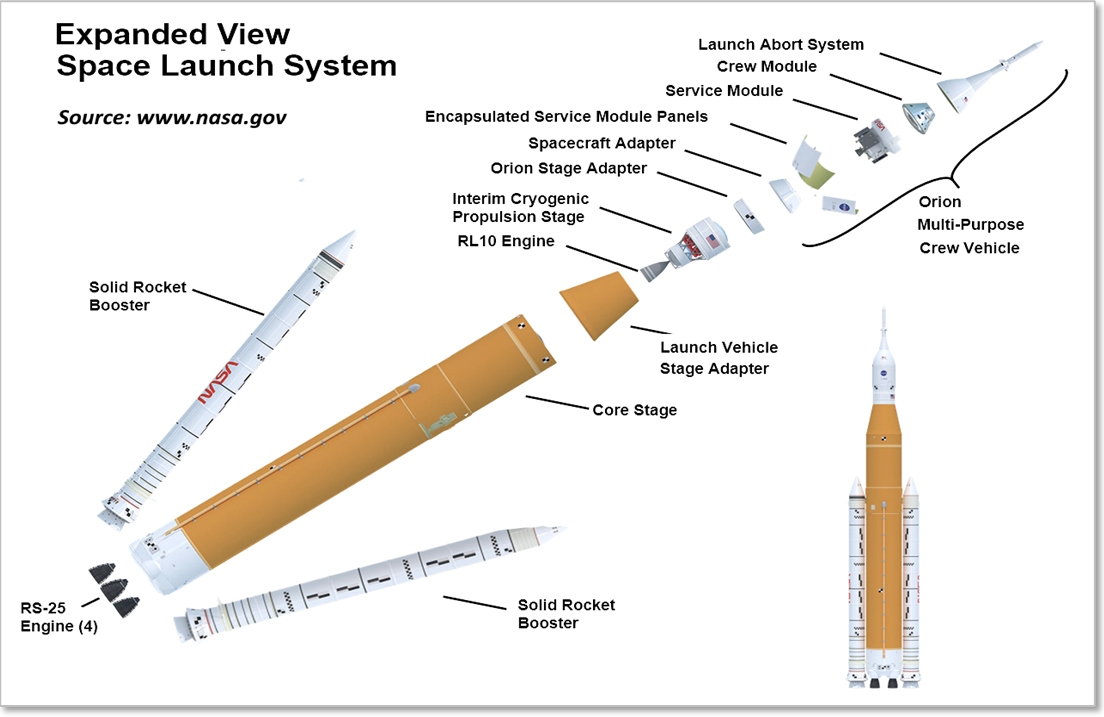The NASA Artemis Program
When the Apollo 17 Lunar Module lifted off from the Moon’s surface on December 14, 1972, no one imagined that it would be more than 50 years before another crewed lunar landing would be attempted. The reasons for this are many, but first and foremost was that the clear objective had been met. The main motivation for an accelerated, very costly Apollo program was the cold war competition with the Soviet Union. The world is very different today, although growing tensions with China have renewed some of the same fears. Certainly, the lunar landing has endured as a major milestone in human history, with many positive impacts both tangible and intangible.
Despite the long hiatus to crewed missions beyond Earth orbit there have been many spectacular achievements over the intervening decades, including countless unmanned programs and the International Space Station. These have vastly increased our knowledge of the solar system and the entire universe, and technological development now enables missions that could not have been imagined in the Apollo era.
Some degree of planning for a return to the moon has been a part of programs begun since the start of the 21st century. Due to shifts in the political landscape and the competition for limited funding (0.5% of the federal budget, versus about 4% in the Apollo era), most of these did not survive. However, since 2010 the component pieces progressively materialized to become the Artemis program. Aptly named for the sister of Apollo in Greek mythology.
There are currently five missions scheduled for the Artemis program by 2028. The first of these was achieved in November/December 2022, delayed by over 2 months by several scrubbed (cancelled) launches. Two of these scrubs were due to technical issues with hydrogen fuel leaks, while in late September the entire 322-foot vehicle had to be moved back to the assembly building to avoid damage from Hurricane Ian. Such delays are common, particularly with new programs, and these are the most complex missions ever attempted.
| Mission | Planned Launch Date | Approximate Duration | Goal |
| September 3, 2022 | 25 days | Uncrewed lunar orbit and return. | |
| May 2024 | 10 days | 4-person manned lunar flyby | |
| 2025 | 30 days | 4-person lunar orbit with 2-person lunar landing | |
| 2027 | 30 days | 4-person lunar orbit and delivery of the I-HAB module to the Lunar Gateway. | |
| 2028 | 30 days | Lunar landing with the Lunar Terrain Vehicle and delivery of the ESPRIT Refueling Module to the Lunar Gateway. | |
| Source: Wikipedia https://en.wikipedia.org/wiki/Artemis_program | |||

The original Artemis program envisioned utilizing a permanent space station in lunar orbit as a transfer point beginning with the very first manned landing mission, Artemis III. The Apollo project demonstrated that the command module could perform this function. That station, called the Lunar Gateway, remains an important part of the program but its development schedule lagged behind the other components, so in 2020 NASA announced that the Artemis III landing would proceed independently, with the new plan being to deploy the gateway for the Artemis IV mission, now scheduled for 2027. The Lunar Gateway, though necessarily smaller that the earth-orbiting International Space Station, leverages many of the same design features and will be expandable via the docking of new modules.
In addition to the five scheduled missions, it is expected that others will be proposed. However, the program’s history to date suggests that even these five are likely to have changes in schedule and objectives.
It was only recently, in April 2021, that NASA made the final selection of a contractor for the replacement to the Altair lunar lander, which was cancelled several years ago. The SpaceX Human Landing System (HLS) beat out competitive proposals from Blue Origin and Leidos/Dynetics.

As seen in the first image, the Altair would have been very similar in design to the Apollo Lunar Module, but some 50% larger and far more advanced technologically. Fans of the movie Apollo 13 will be very familiar with how this design would have docked with the Orion crew module for travel to and from the moon.
The HLS will take a dramatically different approach, being much larger and drawing heavily from the technology of the SpaceX Starship launch vehicle. It will travel independently from Orion from earth to lunar orbit, where they rendezvous in preparation for the lunar landing.

The new plan is exciting, suggestive of space vehicles many baby boomers will recall from early science fiction movies. Pragmatically, though, it will be far more extensible for advanced future missions. With that, however, comes the risk of a completely new technology. Notwithstanding the growing reputation of SpaceX to deliver on complex projects, it could call into question the feasibility of each of the scheduled milestones from Artemis III onward.
There will be much more to discuss about these future missions as time goes on and they proceed to implementation.
The launch vehicle for most Artemis missions is the Space Launch System (SLS), which has the most powerful booster configuration ever built, with up to 8.8 million pounds of thrust. About 25% of this comes from the four traditional liquid hydrogen/liquid oxygen engines of the core stage. The familiar orange-brown color comes from the insulating layer that keeps these cryogenic propellants at their required extremely cold temperatures.
The bulk of the liftoff thrust is generated by the two attached solid rocket boosters (SRB’s), which are enhanced versions of those that were used on the Space Shuttle. They burn powdered aluminum mixed with a powerful ammonium perchlorate oxidizer. As was the case with the Shuttle, the SRB’s will separate from the core stage after about two minutes of flight time. After that point, the liquid fuel rockets will have sufficient thrush to continue the acceleration of the vehicle for about six minutes of additional burn time. After that the second stage, known as the Interim Cryogenic Propulsion Stage, will provider about 25,000 pounds of thrust to carry the Orion/Altair payload into earth orbit.
The Artemis launches will be spectacular for viewers, even more so than the Shuttle, with earth-shaking sound heard many miles from the site. The November Artemis I launch took place in the very early morning hours before sunrise and was visible and audible along the entire “space coast” of Florida.
Unlike the Shuttle (and SpaceX) boosters, none of these is planned to be reusable. Reuse was not considered to be of significant economic benefit given the limited, infrequent launches for the program.
The expanded view below shows the detail of each of these booster sections in the full assembly, as well as the payload components. When the HLS lander mission finally becomes reality, it will use a completely different launch vehicle based on the SpaceX Starship, but the SLS remains the plan for transport of astronauts and all orbital components to the moon. There is potential for competition between these two tracks of the program and one can imagine Elon Musk and SpaceX envisioning an even bigger role for the Starship. It will be interesting to watch.

Due to the extended schedule of the future Artemis missions and the inevitability of changes as the program progresses, expect future articles not to be published contiguously. We’ll continue to cover other topics, releasing updates on Artemis as future developments in the program dictate. Hopefully this introduction will enhance your interest and encourage you to follow it more on your own.



